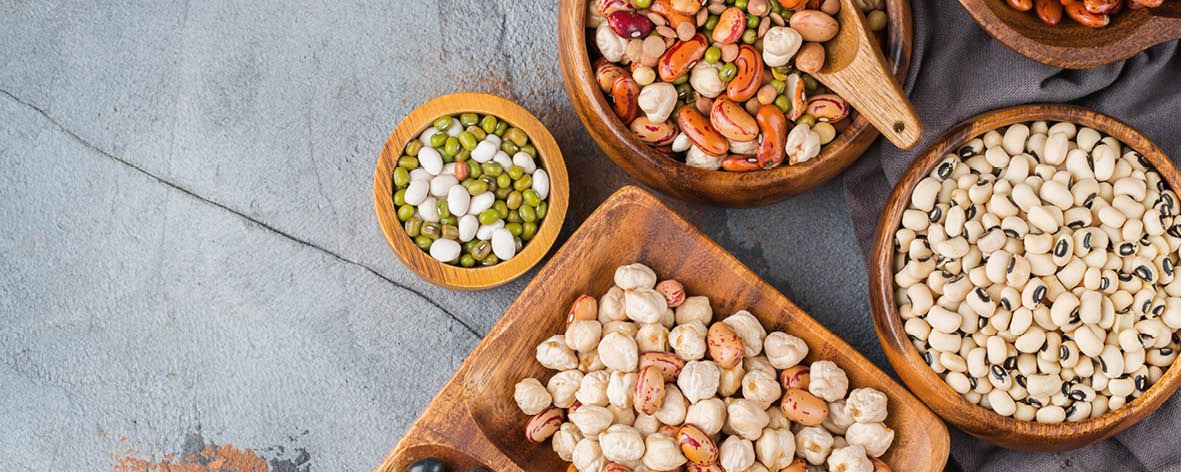All you need to know about … pulses

Pulses are the dried, edible seeds of legumes and are a fantastic source of plant-based protein. They are filling, cheap and versatile and 80 grams of pulses count as one of your recommended five serves a day of vegetables. Nutritionally they are an excellent source of dietary fibre, B vitamins and other important vitamins and minerals. They can help improve cholesterol levels, reduce blood sugar and are excellent for gut health. Wondering how to use them? We’ve put together a handy guide to pulses to help you out.
Are tinned or dried pulses best?
Really, there’s no right or wrong here. Both tinned and dried pulses offer excellent value for money, although dried are cheaper. Tinned are great if you’re short on time because the cooking has been done for you, although cooking dried pulses often results in a better depth of flavour.
How do I cook them?
It is recommended to soak dried pulses in cold water overnight, or at least for a few hours before cooking. If you add a pinch of salt to the cooking water, it will help soften the skins. When cooking pulses be sure to skim off the froth that rises to the top of the pot.
What can I use them for?
Versatility is one of the things we love the most about pulses. You can add them to soups, casseroles and chilli, or blitz them to make a delicious humus. Read on for what to do with each variety of pulse.
Red Kidney beans
Tinned red kidney beans are great in salads and in Mexican food, and either tinned or dried varieties are a key ingredient in chilli con carne. If using dried kidney beans, boil them for at least 10 minutes.
Puy lentils
You can identify puy lentils by their speckled appearance. They have a distinctive flavour that makes them a delicious addition to casseroles.
Red split lentils
Small and thin, these cook quickly and break down to make a thick puree. Their gentle, nutty taste goes well in soups.
Black Beans
Popular in both Chinese and Mexican food, they work well with smoky flavours.
Borlotti Beans
These beans are a variety of kidney bean. They have a distinctive pinkish-brown speckled appearance. Widely used in Italian cooking, they have a sweet flavour and smooth and creamy texture.
Chickpeas
One of the best known pulses, they are a staple of Middle Eastern and Indian dishes and the key ingredient in humus and falafel. The liquid from tinned chickpeas is called aquafaba and is used as an egg replacement in vegan dishes.
Cannellini Beans
These creamy white beans are a feature of the classic Italian minestrone soup and have a creamy texture and slightly nutty flavour. They are the bean used in baked beans and are popular in Italian cooking. Cannellini Beans mild flavour makes them a popular addition to a wide variety of dishes.

